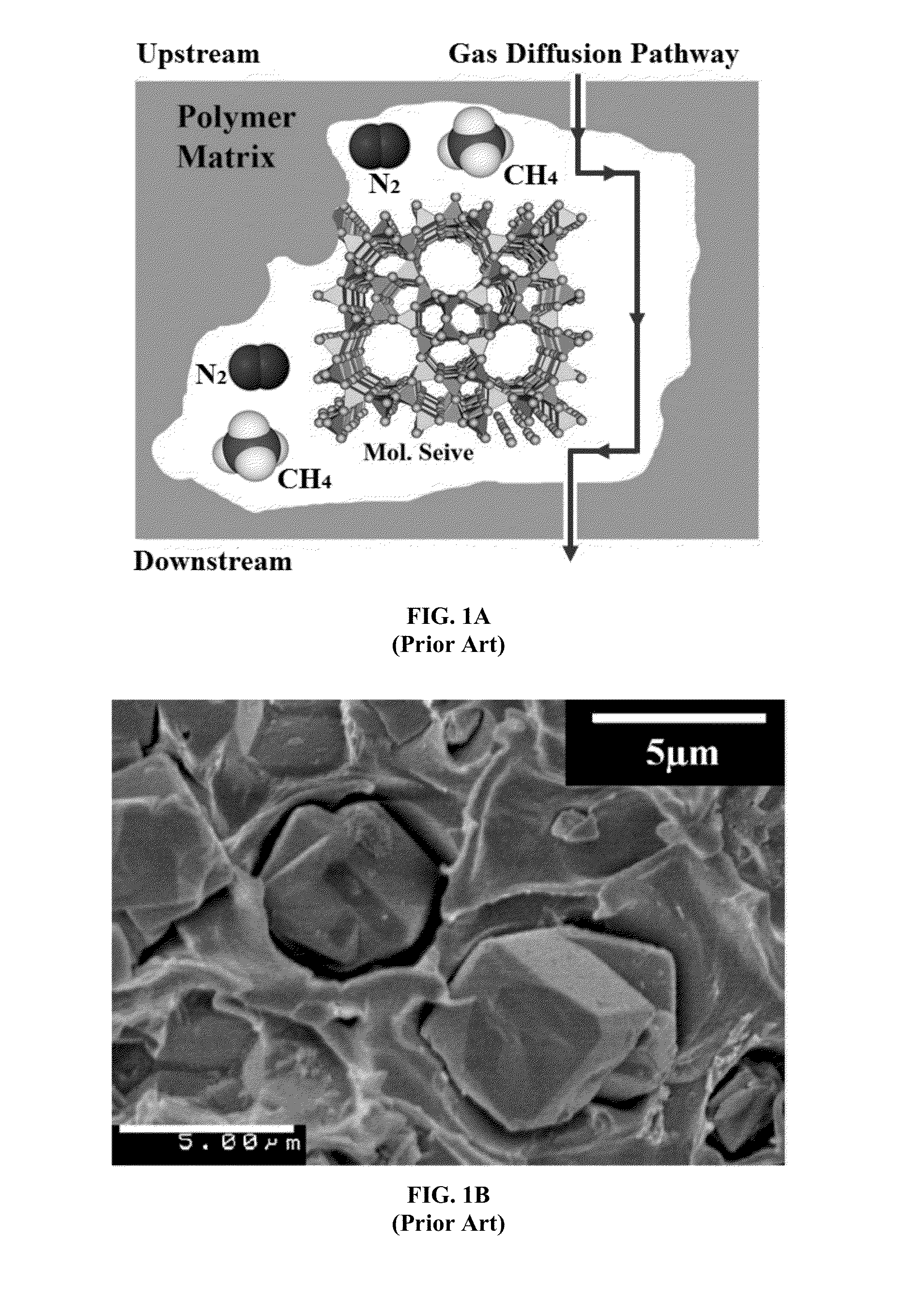Mixed matrix polymeric membranes
a polymeric membrane and mixed matrix technology, applied in the field of mixed matrix polymeric membranes, can solve the problems of less efficient and more costly use, mixed matrix membranes that fail to perform above a given, and reduce the selectivity of given materials, so as to reduce the size and number of interfacial voids, increase the selectivity of the membrane, and reduce the effect of reducing or avoiding
- Summary
- Abstract
- Description
- Claims
- Application Information
AI Technical Summary
Benefits of technology
Problems solved by technology
Method used
Image
Examples
example 1
Synthesis of Hybrid ZIF-8-90
[0064]A solution of 100 mmol of Sodium formate, (100-x) mmol of 2-methylimidazole and x mmol of carboxaldehyde-2-imidazole in 250 mL of MeOH was prepared. To fully dissolve the OHC-IM ligand, the solution was heated to 50° C. until it became clear. A separate solution was prepared with 25 mmol of Zn(NO3)2.6H2O and 250 mL of deionized H2O. After the MeOH solution cooled to room temperature, the Zn salt solution was poured into the former solution and allowed to stir at room temperature for 2 h. The resulting milky precipitate was collected by centrifugation. And then the precipitate was dispersed in 100 mL of MeOH and washed three times. The powder was dried in an oven at 85° C. under vacuum for 48 h (FIG. 4).
example 2
Synthesis of ZIF-8-90-EDA
[0065]2 ml of ethylenediamine and 2 g of hybrid ZIF-8-90 were mixed in 100 ml of methanol and refluxed over 24 h under N2 atmosphere. The reaction mixture was cooled down to room temperature. The powder was collected by centrifugation and washed with methanol three times. The powder was dried in an oven at 85° C. under vacuum for 48 h (FIG. 5).
example 3
Synthesis of Polyimide 6FDA-Durene
[0066]To a 250 mL of three-neck round flask, 4,4′-(Hexafluoroisopropylidene)diphthalic anhydride (10 mmol) and 2,3,5,6-Tetramethyl-p-phenylenediamine (10 mmol) was dissolved in 30 ml of anhydrous NMP and stirred for 24 h under N2 atmosphere. Then the reaction solution was added 226.6 mmol acetic anhydride and 11.55 mmol of pyridine and stirred for 48 h. The polymer was precipitated from methanol three times. A white polymer was obtained and dried at 120° C. under vacuum for 48 h (FIG. 6).
PUM
| Property | Measurement | Unit |
|---|---|---|
| Pore size | aaaaa | aaaaa |
| Pore size | aaaaa | aaaaa |
| Fraction | aaaaa | aaaaa |
Abstract
Description
Claims
Application Information
 Login to View More
Login to View More - R&D
- Intellectual Property
- Life Sciences
- Materials
- Tech Scout
- Unparalleled Data Quality
- Higher Quality Content
- 60% Fewer Hallucinations
Browse by: Latest US Patents, China's latest patents, Technical Efficacy Thesaurus, Application Domain, Technology Topic, Popular Technical Reports.
© 2025 PatSnap. All rights reserved.Legal|Privacy policy|Modern Slavery Act Transparency Statement|Sitemap|About US| Contact US: help@patsnap.com



